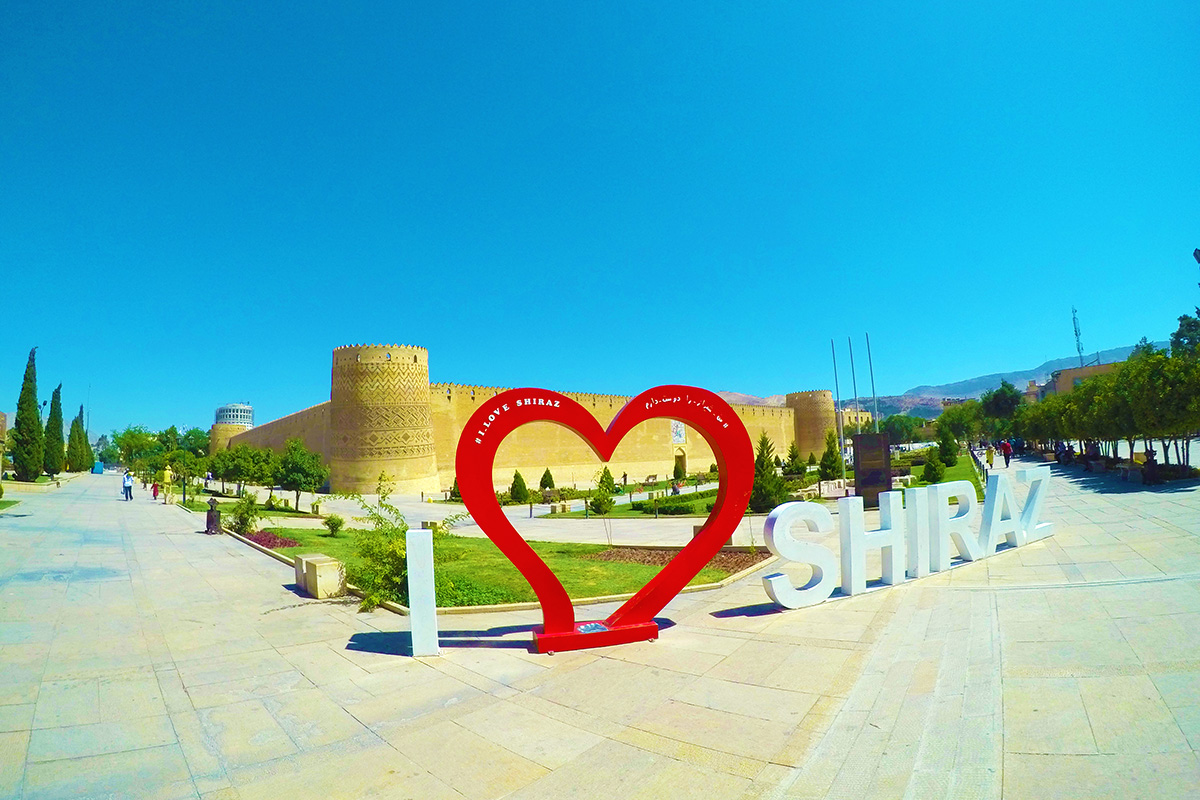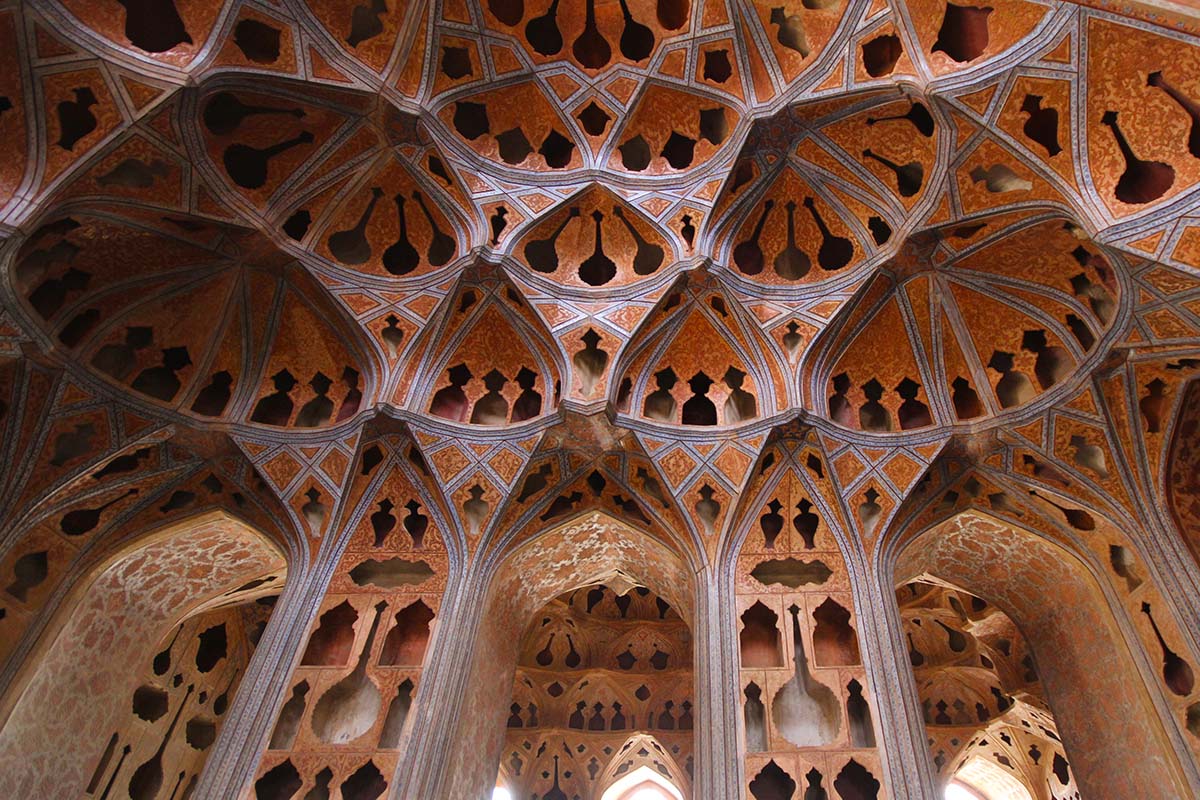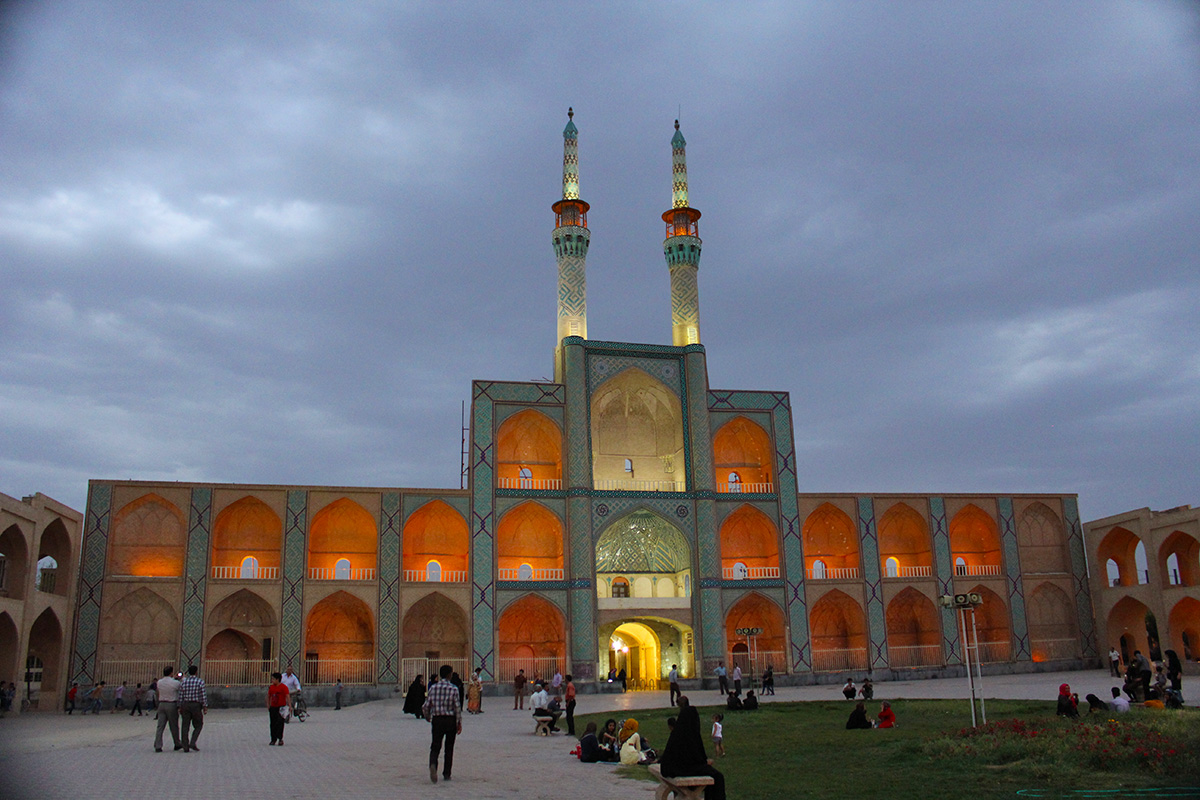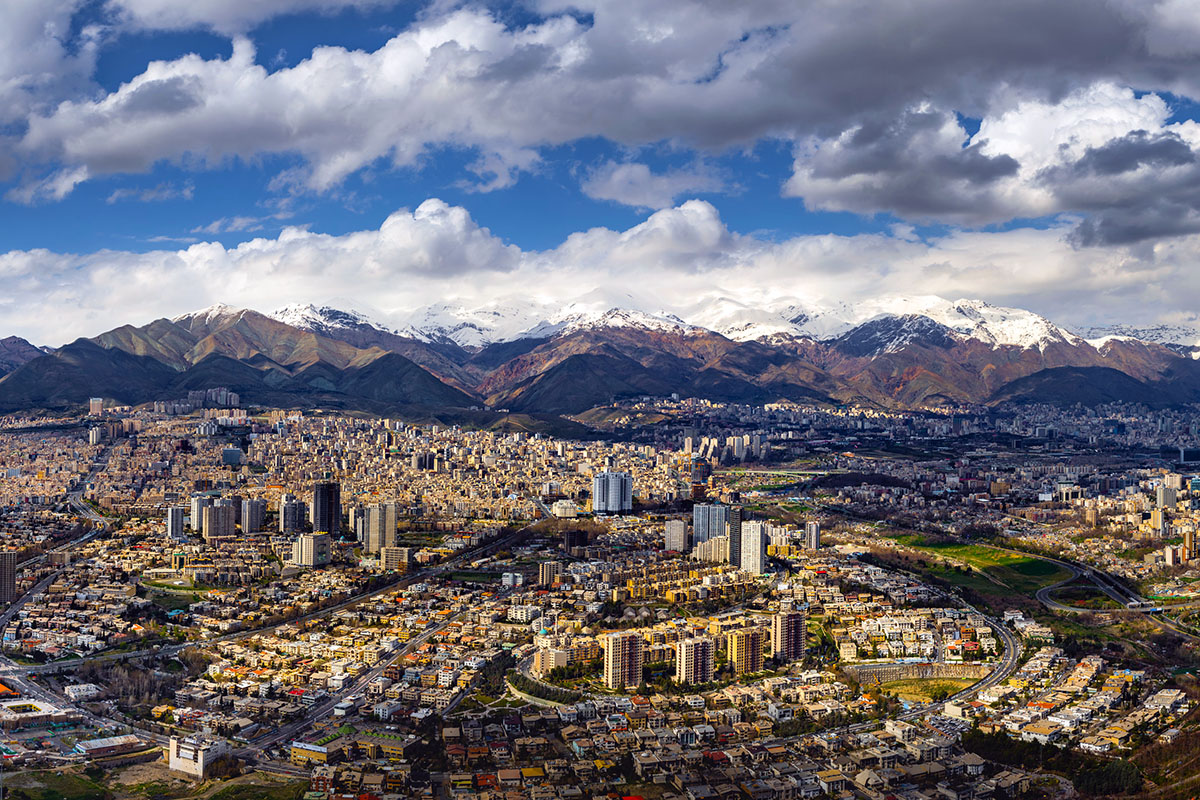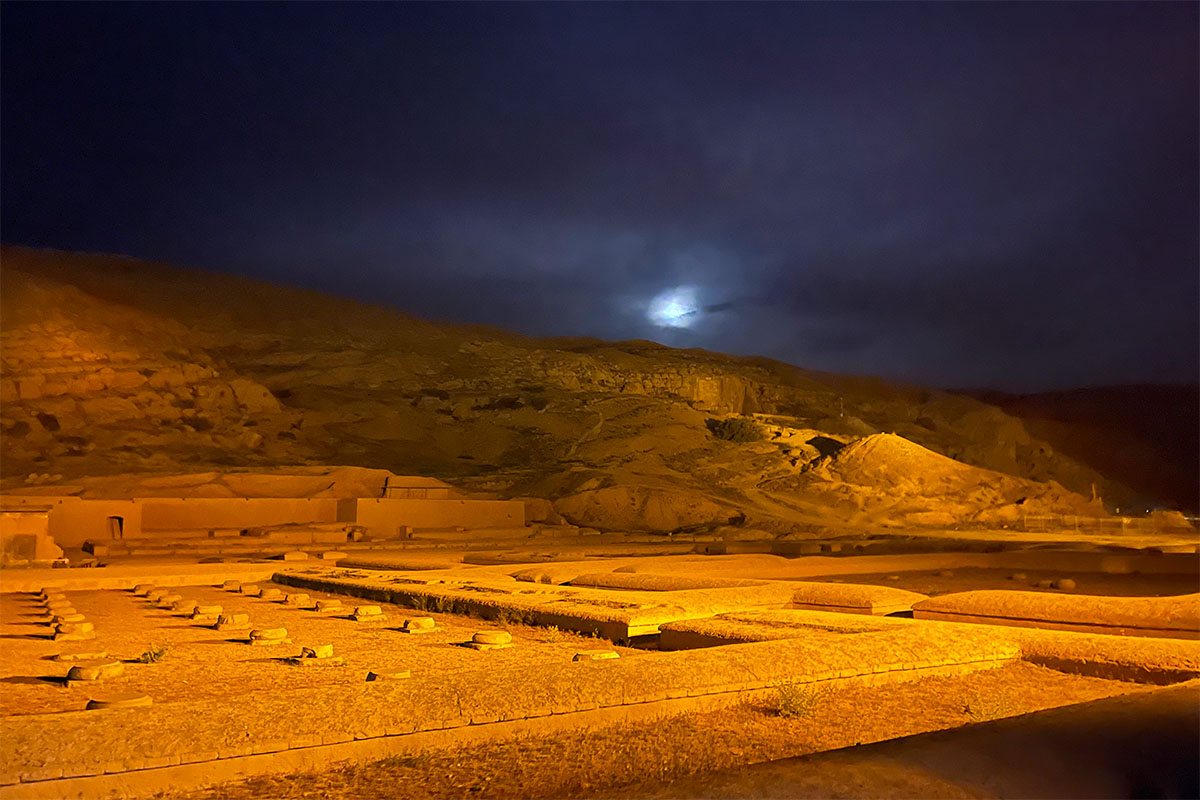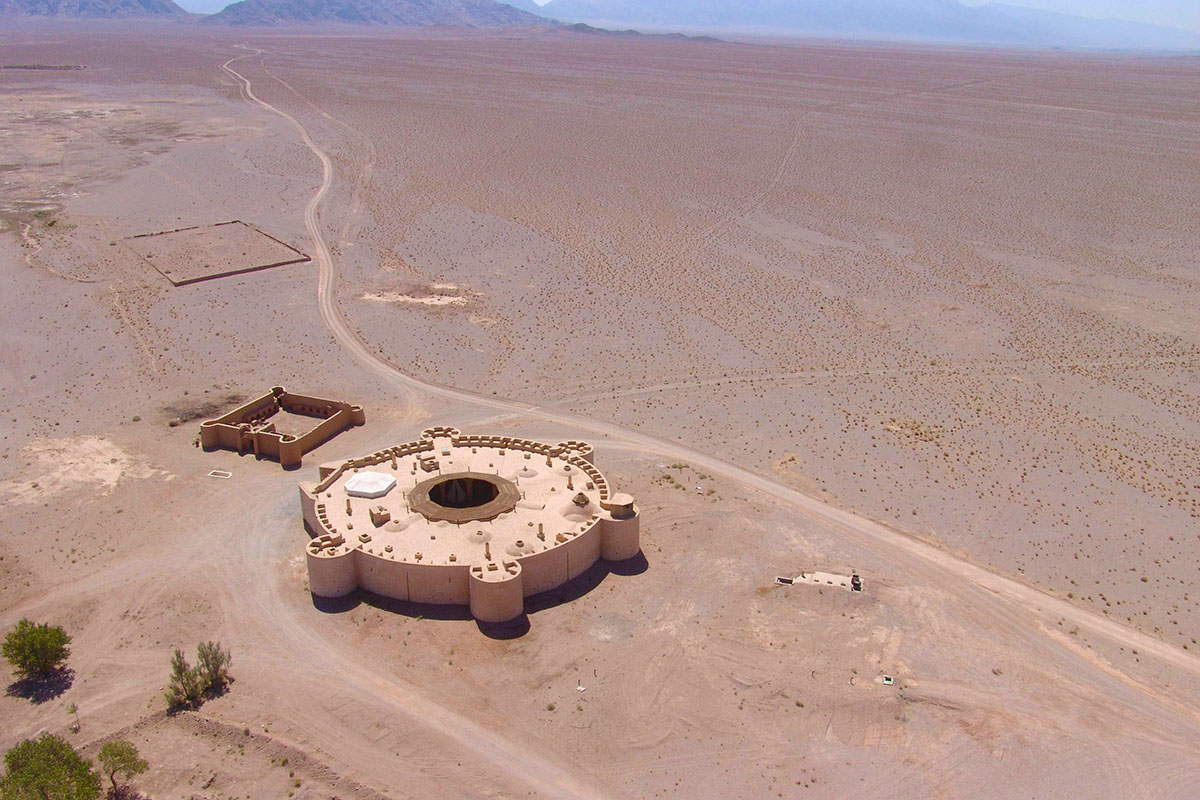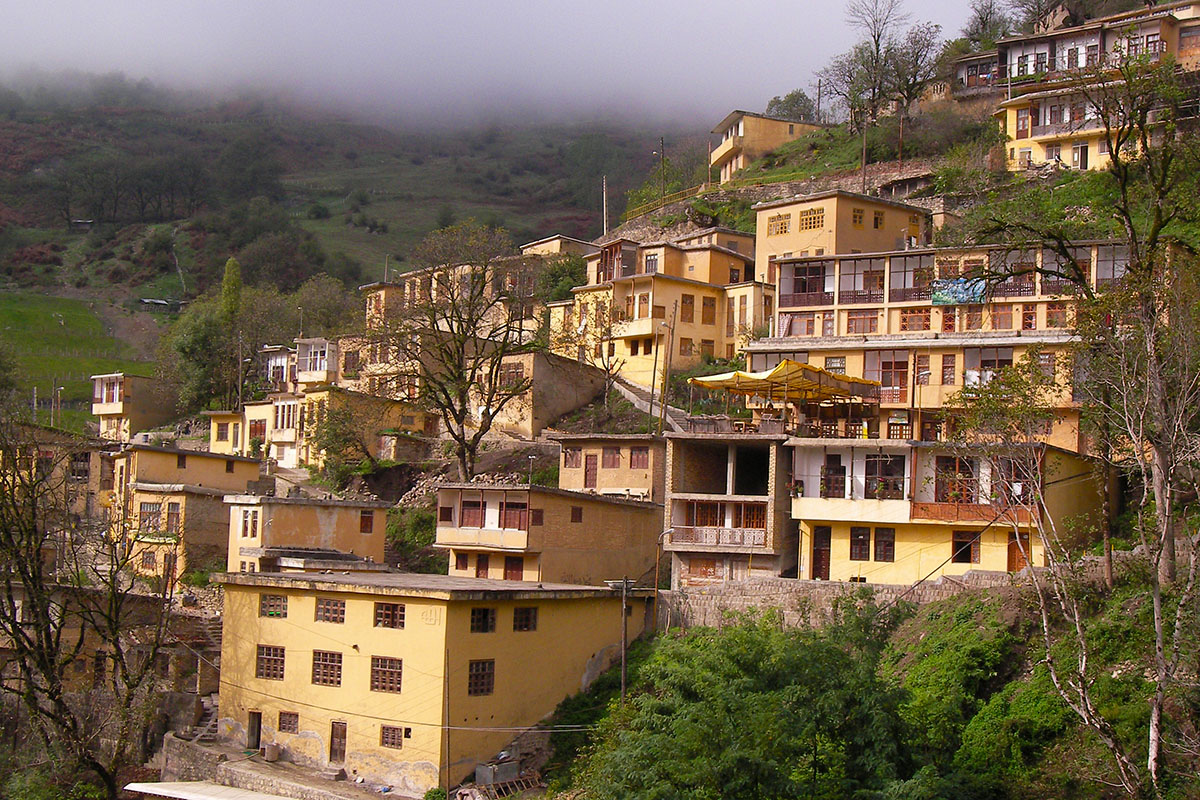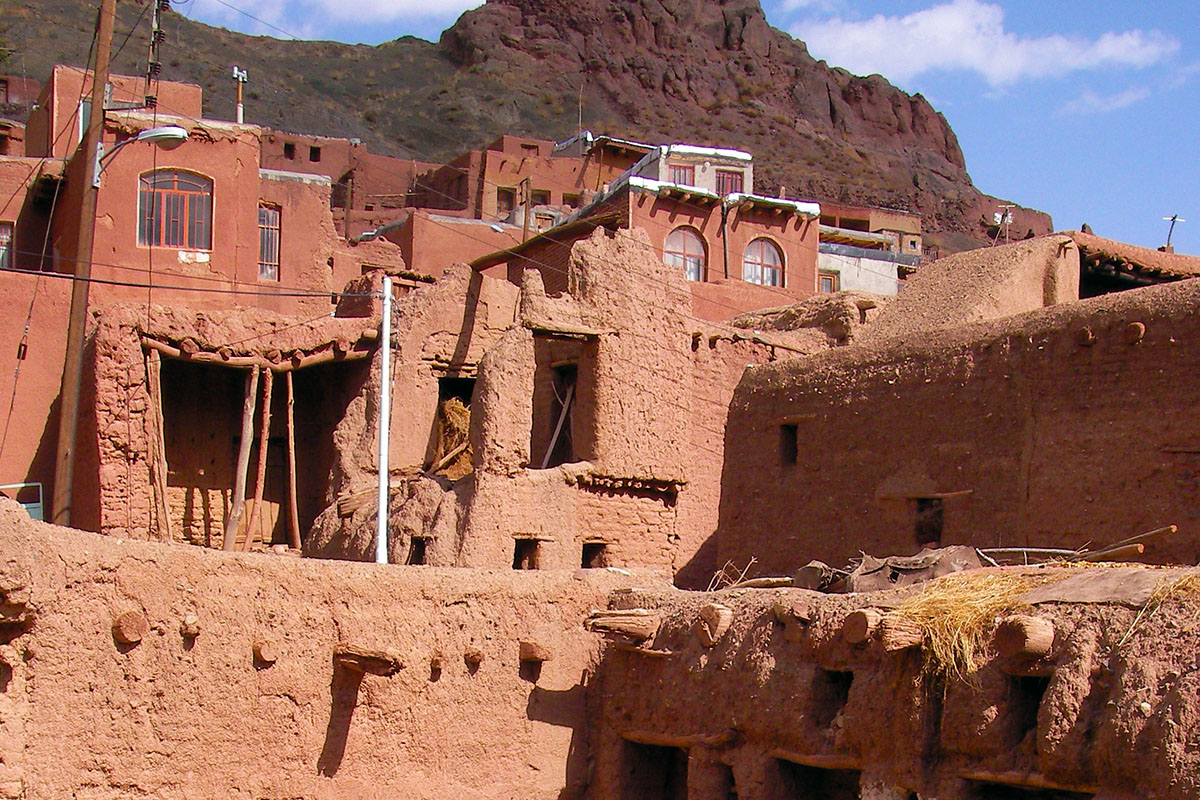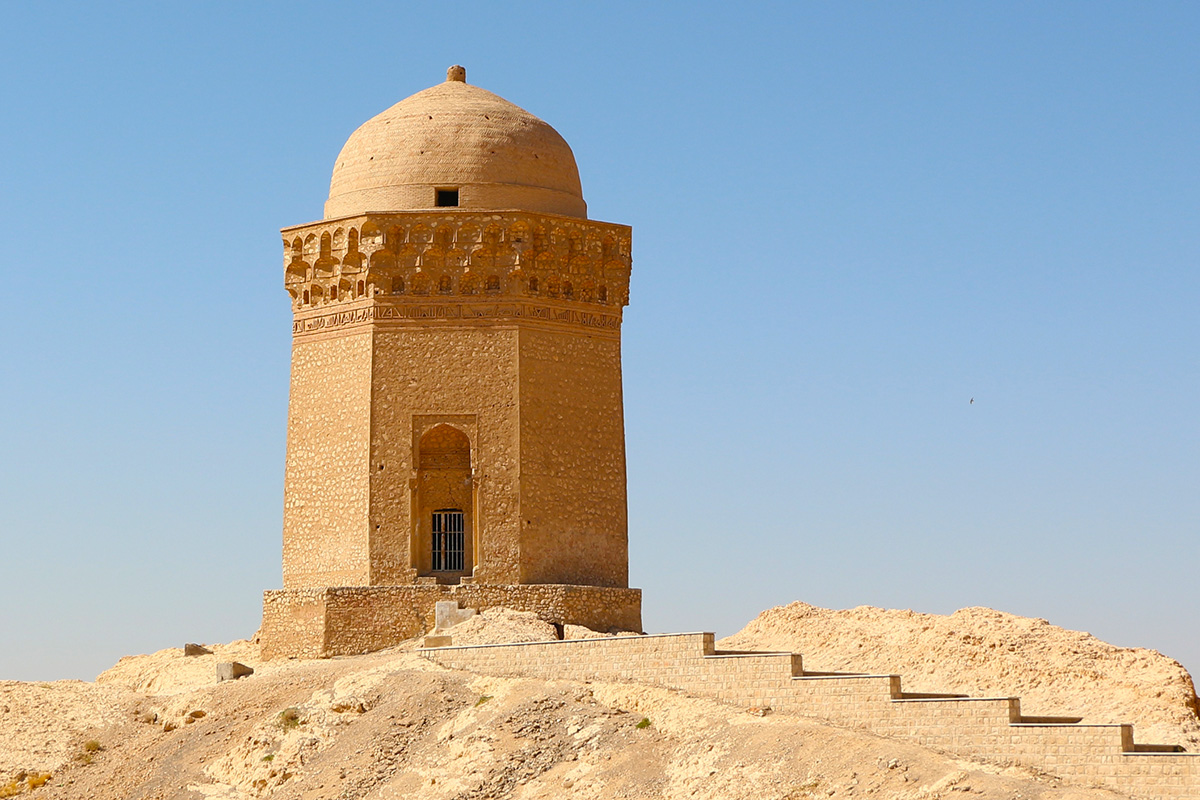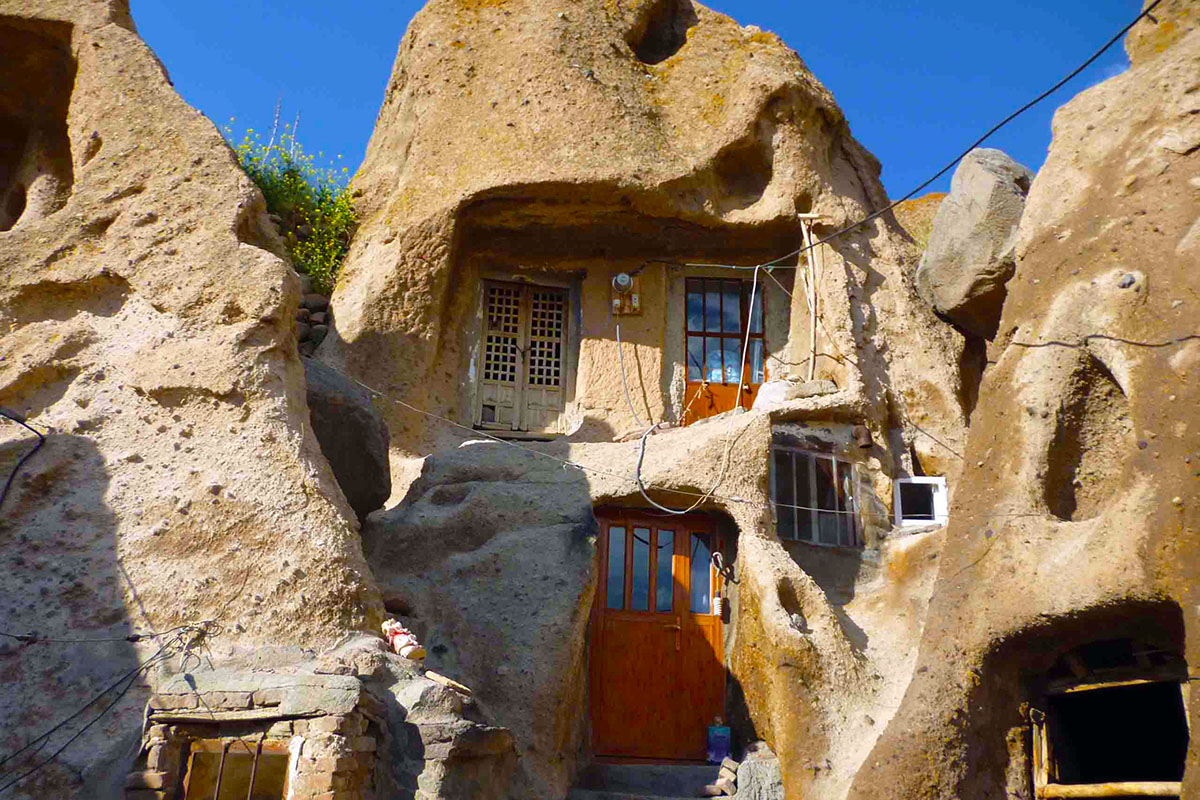As the crossroad of ancient civilizations, the enchanting city of Kashan is nestled on the central Iran comprising a part of Isfahan Province in the heart of Karkas Mountains. Feeling the moment isn’t hard to do in Kashan. The historical diversity, unique gastronomy and vibrant folklore is unlike any other place. Everywhere you turn there is an aliveness surrounding to explore. But there is also a relaxed lifestyle that unquestionably welcomes the spontaneous and unexpected. Whether you are wandering through the awe-inspiring Fin Garden or the enchanting views of historical houses, there is something unforgettable around each corner of this historic city. There is some disagreement over the origin of the name. A commonly held view is that Kashan is derived from “Kiashan" defining the position of the rulers and others express different opinion that Kashan means summer houses made of wood and straw.
Rich with cultural destinations and steeped in history, Kashan is arguably one of the most beautiful Iranian cities. Bearing the name of the inspiring city of desert, Kashan has enchanting historical ambience and stands stable and consistent as a glaring pearl in the middle of the desert and on the foothills of Zagros Mountains. Kashan is the city of mosques, turquoise domes and tall minarets, a book of memorable monuments of Iranian history and art. With a record of 7000 years of history, Kashan is home to noble traditions and originality which is deeply in bond with Sialk civilization. The city’s long history plays an important role in the archeological findings and hence is called by most historians and travelers as the gate of global civilizations. After the advent of Islam, The city reached its zenith during Seljuk and Safavid era. Today, world’s famous museums are hosts to many artistic works of this region. The city was the favorite of Shah Abbas, who made lots of attempts in its prosperity and development.
History
The discovery of silver coins belonging to the Achaemenids and Parthians in this area shows traces of the Achaemenid and Seleucids. Although there are no documents proofing the Parthian period but numerous historical evidences indicate the development and prosperity of Kashan in the Sassanid era. Kashan in the early decades of the first century AH, was invaded by Arabs and was submitted with much resistance after the loss of its fortifications. This city flourished during Al-Bouyeh and its pottery and metal industries were famous. At the beginning of the fifth century and the rise of the Seljuks, Kashan became increasingly important, and in this time, great men of this city entered governmental service and reached advanced ranks. Most buildings constructed in the Seljuk period were destroyed due to the successive earthquakes. But what is left, shows the development and prosperity of Kashan in that time. Kashan in the seventh century experienced lots of damages by the brutal attacks of the Mongols and a part of the city was destroyed and looted but very soon recovered due to the boom of workshops in weaving carpets, fabrics and production of tiles and pottery. During this period, new buildings were built and the bazaar was expanded. At the time of Jahanshah , other prestigious buildings were built some of them still exist. Safavid period was the best period of prosperity and development for Kashan. Dozens of monuments in the city and its suburbs and the emergence of dozens of scholars in this period represent the golden age of Kashan. After choosing Isfahan as the capital, Safavid Shia rulers paid considerable attention to Kashan which was the most important Shia center and left numerous welfare and religious places during their several trips to this city. During the Qajar era, Kashan passed a quiet time, although the city was destroyed with a terrible earthquake. At this time, the city was not prosperous like Safavid period but their industry was superior to the other cities. At this period, Kashan was expanded and many buildings were added to it.
Language
People of Kashan speak in Persian with Kashani accent. This accent, like most dialects of Persian has some phonetical features which is specific for the region. These characteristics are mainly the result of the performance of processes such as coordination of accent vowels, consonant assimilation, deletions and so on. Although some of them can be seen in other types of Persian accents, the type and the extent of their incidence made Kashani , a distinct accent from other Persian ones.
Climate
In terms of climatic zoning, Kashan is located in the area with relatively cold winters and very hot and dry summers. The city of Kashan is surrounded by the central mountain ranges. The villages on the mountain foot have generally fine weather, but from the northeast, it is connected to the salty lands of Iran’s central desert. The weather gradually gets hot and dry and it is hot and dry in Kashan plain. The main reason for the dryness in of Kashan is its proximity to the desert. In summer, the heat exceeds 40°C. Desert winds that blows from dawn to dusk, make the weather dry and dry air which blows from the mountainous region, adjusts the weather.
Customs & Cultural Attractions
New Year
At New Year, the people of Kashan cook rice, set a wide table and various types of food are used.
Fire Setting
In Natanz and its villages, in the night of the seventeenth, eighteenth and nineteenth of the Iranian month of Dey (Jan. 7th, 8th and 9th) , it is customary that children gather in various groups and each group burns the collected thorns and bushes on the hills and the highlands of the village so that the flames enlighten the whole region. They believe if the light reaches the trees, make them more fertile and removes the pests. Some go to the cemetery and collect small and large stones and hang it to tree branches so that the trees get more fertile.
Rosewater Ceremony
Kashan is famous for its rosewater. The process of rosewater is in a way that large pots are filled with rose and water and are put on firewood. They produce rosewater with distillation. Before the ceremony they take the pots of rosewater to the river and perform this ceremony with singing religious prayers. Around two million people visit the ceremony of rosewater in the cities of Kashan, Qamsar and Niasar every year.
Sweets & Traditional Cuisines
The traditional cuisines of Kashan include Goushtlubia (mixture of meat and beans), Shefteh (Chopped meat and bean), meatballs (Kufteh), Goushtkalam (mixture of cabbage and meat). The pastry of Kashan includes: Cakes and Pashmak (cotton candy), baqlava (kind of pastry usually cut out in lozenges, Mirza Hosseini file, sesame pudding, sesame syrup, pussy Noql.
Handcrafts
Brocade
Brocade is a very precious and elegant cloth with warp and woof of silk, gold or silver.
Pottery
Kashan pottery industry goes back to Sialk civilization dating back to more than seven thousand years ago, Sialk is considered as one of the oldest human civilizations.
Carpet
Kashan carpets produced in Safavid era were legendary for their beauty and today they decorate the major museums and collections. The oldest carpets belong to Kashan. This carpets have generally the schemes of hunting. The other crafts in Kashan include: tiling, stucco work, brickwork, fretwork, velvet weaving, felting, and inlaid.
How to reach
By Air
Kashan Airport has no flights at the moment, but in near future it is going to carry out some flight programs.
By Train
Kashan is connected to the country‘s railway through Kashan central station to the cities of Tehran, Shiraz, Yazd and Mashhad.
By Bus
Kashan is connected to Isfahan and Natanz ,Qom and south regions via freeways.
Availability of transportation stations
- Baggage
Storage service is available
- Wheelchair
Access to the train and bus stations.
Wireless Internet:
WIFI Internet is accessible in the station.
Attractions
Fin Garden
As an outstanding epitome of Persian gardens, this lush garden lies in south of Kashan, in the vicinity of Fin village. Rising in a desert landscape and soothing the soul with the beauty, the enchanting garden lined with cedar trees and numerous fountains was designed for Shah Abbas. This monument was initially built over the buildings of Al-Bouyeh period. In terms of the garden layout and water supply, the general spaces of this garden are of special importance. Spread over 23,000 square meter, this classical Persian vision of paradise consist a main yard surrounded by ramparts with four circular towers and has always been prized for its natural springs. Fin Garden has a national reputation due to the murder of Amir Kabir, the Qajar chancellor, by the Qajar King in its small bath. The garden refers to Safavid period and has survived for hundreds of years due to the water of Suleimanieh spring. This water passes through the ponds and elegant pools of Fin Garden and then irrigates the plantations of Fin countryside. Earned its place as a world heritage, the garden offers various parts to visit: an entrance area, fort, alcove, museum in west of garden, small and big bathrooms and a library in the east.
The Underground City of Ouyi (Nushabad)
Beneath the earth in Kashan, lays one of the most dazzling excavations for travelers, the underground city of Nushabad. The ancient multi-level underground city is made of caves rich in archeological finds that have been recently brought to light after centuries of silence. The first and second floors are built at a depth of 3 and 16 meters respectively. High on every visitor's hit-list, the underground city is dense, complex encompassing wide structures identical to narrow corridors and rooms in small dimensions. Flooded by visitors, the city has spaces all created by delicate and subtle digging together with corridors of a height of 180 cm and in some parts to 90 cm along with rooms of with different dimensions. The end of each corridor leads to another. It is one of the most enchanting keys with which to enter into the dimension where history, cultural roots and time have left a profound and tangible mark. The floors are linked by vertical and horizontal channels. In addition to these channels, there are large rocks identical to that of the grinding mills. When taking shelter in the lower floors, the openings of the channels were closed by means of the rocks. It's a magical wonderland that both nature-lovers and history-buffs can appreciate.
Tepe Sialk
Known as the dwelling of the first urban civilization, Sialk lies 3 kilometers of Kashan and is the earliest origin of human urbanization. This archeological structure consists of two hills and two cemeteries dating back to 3rd millennium BC. Houses are made of irregularly-shaped mud bricks. The inhabitants were conquered by Aryans about 2,500 years ago and their traces are discovered in different excavations, varying from piped containers with images of sun and horse to iron weapons such as swords and long spears. Claimed to be the oldest Ziggurat in the world, Sialk hill made of clay and pottery, was the worshiping place for the ancient tribes. Several human skeletons and old utensils were found in the ruins. These excavated objects are exhibited in Louvre Museum in France and in Iran’s National Museum.
The Historical Bazaar of Kashan
The legendary Bazaar of Kashan, near the historic center is a vast labyrinth of covered streets encompassing a number of shops selling every imaginable item from jewelry and carpets to leather. Most visitors find time to wind through the labyrinth of the famous and historic bazaar, dating back to the Safavid era. This bazaar is the prettiest and most historic attraction in Kashan, earning its beauty from its astonishing arches embellished with excellent design. Economically subordinated to goldsmiths, shoemakers and carpet sellers, this huge indoor market encompasses deep narrow passages. Gold and silver are made into jewelry and objects of desire. Silks, luxurious fabrics and carpets values are offered to shoppers. Among the various parts, Aminodoleh small caravansary is a great treasure kept in a well-chosen place in Kashan.The long building with three floors is of great grandeur and beauty. The geometrical masterpiece made this monument distinguished and unmatched in its kind. Precision and special skills were applied for its strength, design and architecture and it is still intact after 150 years. The complex houses another masterpiece named, Saraye Sharifkhaneh built in two floors dating back to Qajar period. With its elegant decorations and tile works bearing unique images and painting, this structures grants outstanding entity to the covered market.
The Mosque & School of Agha Bozorg
As the finest mosque in Kashan known for its precise symmetric design, the mesmerizing mosque and theological school of Agha Bozorg stands out with the elegant forms and rich interior decorations dating back to 18th century. As the testimony of astonishing achievement, the mosque is perhaps the most striking example of Islamic architecture. The construction purpose was holding prayers and theology courses carried out by Mullah Mahdi Naraqi II, known as Agha Bozorg. The mosque has a quiet beauty unmatched by its kind, with a central courtyard and a pool in the middle, four porches, two ornate minarets & a brilliant brick dome which has its place among the largest brick domes. The embellishments used in this building are tiling, brickwork, plaster inscriptions, calligraphy and painting.
Niasar Fire Temple & Cave
As the most intact example of ancient temples, the huge monument stands in a high point in Niasar valleys 48 km of Kashan and can be seen easily from the distance. The outstanding Sassanid monument is made of stone and mortar and decorated by stucco work. The oval dorm is supported by walls of fourteen meters wide. The construction of this temple is attributed to Artaxerxes I. Laid near the temple, the man-made Niasar cave has been undoubtedly a worshiping place for performing the rituals of Mithraism. Built with a large set of corridors, rooms, wells and winding tunnels, the cave is attributed to the Parthian period. Inside the cave there is fresh air and the corridors length reaches to 650 meters, however, in some parts, corridors are too narrow and one should gild through in order to pass. The maximum ceiling height is 1.7 meters and the cave leads to a waterfall at its end.
Broujerdi House
As a true masterpiece of traditional Persian architecture, Boroujerdi House refers to 19th century constructed by an affluent merchant. The impressive monument encompasses 3 floors, two cellars, alcove, terrace, entrance and summer and winter porches. The house has fantastic air flowing architecture with wind towers located on top of the roof fitting the harsh features of the deserted region. The delightful wall paintings were done by the royal painter, Kamalolmolk. the kitchen, rooms and stairways to the basement lie in the north part and the south is dedicated to a large covered hall adorned with magnificent stucco works and meshed windows, which was used mainly for celebrations. The prominent roof coverage grants unique feathers to the monument. Air circulates well in the building in a way that in the extreme summer heat, the monuments benefits from pleasant cool air.
Tabatabaei House
Spread over 5,000 square meters, the famous historical house was built by the affluent Tabatabaei family with luxurious decorations, originality of architecture and the appropriate design of climatic conditions of the region. As a masterpiece of Iranian residential mansions, the impressive building consists four beautiful courtyards, delightful wall paintings with elegant stained glass windows. This house has got its name from a merchant who had initially started the construction of this residential building. The architect of this building later built Borujerdi House. This house consists three interiors, exteriors, 40 rooms, 4 courtyards, 4 basements, 3 ventilations and 2 aqueducts. The lavish interiors reflect the glamour and allure of delicate ornaments.

